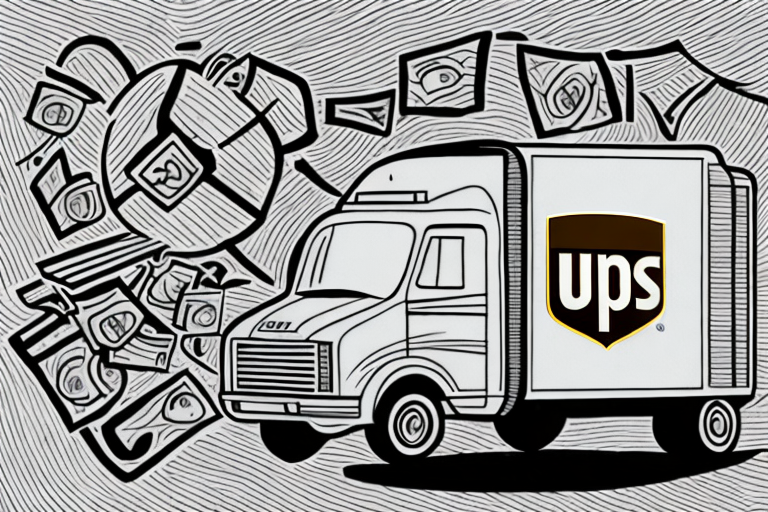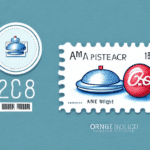Importance of Accurate Postage Calculation
Accurately calculating postage is essential for anyone who frequently mails letters or packages. Whether you're sending items domestically or internationally, incorrect postage can lead to significant additional costs, delays, or even the return of your mail. Proper postage ensures that your mail reaches its destination promptly and efficiently.
Ensuring Timely Delivery
Accurate postage calculation guarantees that your mail is processed without unnecessary delays. Underpaying can result in your package being held by postal services until the correct postage is paid, while overpaying unnecessarily increases your shipping costs.
Maintaining Postal System Integrity
Proper postage calculation contributes to the overall efficiency and reliability of the postal system. It helps maintain the integrity of mail delivery services, preventing issues such as lost mail or returned packages that can frustrate both senders and recipients.
Protecting Business Reputation
For businesses that rely on mailing products or services, accurate postage calculation is crucial. It ensures timely deliveries, which are vital for customer satisfaction and maintaining a positive reputation. Inaccuracies can lead to lost revenue and dissatisfied customers.
Understanding Postage Rates and Services
Postage rates vary based on several factors, including the size, weight, and destination of your mail. Familiarizing yourself with the different types of postal services and their associated costs is the first step in accurate postage calculation.
Types of Postal Services
- First-Class Mail: Ideal for letters and small packages up to 13 ounces, typically delivered within 1-3 business days.
- Priority Mail: Offers faster delivery within 1-3 business days with additional services like tracking and insurance up to $50.
- Express Mail: The fastest option with overnight delivery to most locations and insurance up to $100.
- International Services: Includes options like First-Class Package International Service, Priority Mail International, and Priority Mail Express International, each varying in delivery times and pricing based on destination.
Additional Fees and Services
Additional services such as signature confirmation, insurance, and delivery confirmation may incur extra fees. Understanding these can help you choose services that meet your needs without overspending.
Postage Rate Adjustments
Postage rates are subject to change. For instance, the United States Postal Service typically announces rate changes at least a month in advance, allowing individuals and businesses to adjust their mailing practices accordingly.
Measuring and Weighing Your Mail
Accurate measurement and weighing of your mail or packages are critical in determining the correct postage. Both weight and dimensions play a significant role in postage calculation.
Determining Weight
Use a reliable scale to weigh your package. If shipping multiple items, weigh each item individually and add the total weight to ensure accuracy. Remember to include the weight of packaging materials like boxes and padding.
Measuring Dimensions
Measure the length, width, and height of your package. USPS and other carriers use dimensional weight calculations, which consider the package volume to ensure fair pricing. Incorrect measurements can lead to additional fees or delays.
Packaging Materials
Choose appropriate packaging materials to protect your items during transit. Some carriers have restrictions on certain materials, such as glass or metal, so it’s essential to comply with their guidelines to avoid issues.
Calculating Postage: Domestic vs. International
Postage calculation differs between domestic and international shipments due to varying rates, regulations, and additional fees.
Domestic Postage Calculation
For domestic mail within the same country, calculating postage is relatively straightforward. Determine the weight and dimensions of your package, choose the appropriate service type, and use a postage calculator or visit the post office for accurate rates.
International Postage Calculation
International postage requires additional considerations, including destination country's postal regulations, customs forms, and potential taxes or duties. Utilize online postage calculators that account for these variables to ensure accurate postage.
Customs Forms and Regulations
When sending international mail, properly fill out customs forms detailing the contents, value, and purpose of your package. Inaccurate or incomplete forms can result in delays or the return of your package. Refer to the USPS International Shipping guidelines for detailed instructions.
Saving Money on Postage Costs
There are several strategies to reduce your postage expenses without compromising delivery quality.
Choose the Right Service
Selecting the appropriate mailing service based on your needs can lead to significant savings. For lightweight items, First-Class Mail is often the most cost-effective choice.
Bulk Mailing Discounts
Businesses that send large volumes of mail can benefit from bulk mailing discounts offered by postal services. Programs like USPS Marketing Mail provide reduced rates for qualifying bulk mailings.
Use Online Postage Services
Online postage services often offer discounted rates compared to retail post office prices. Utilizing these services can help you save money, especially for regular shipments.
Alternative Shipping Options
Consider alternative carriers or courier services that may offer lower rates for specific shipments. Comparing prices across different carriers can help you find the most economical option.
Common Mistakes and How to Avoid Them
Avoiding common errors in postage calculation can prevent unnecessary costs and delivery issues.
Underestimating Weight
Always double-check the weight of your package. Underestimating can lead to additional fees and delays in delivery.
Incorrect Service Selection
Choosing the wrong mailing service can result in higher costs or inadequate delivery times. Assess your specific needs carefully before selecting a service.
Improper Packaging
Inadequate packaging can cause damage to your items and may lead to returns or additional handling fees. Use sturdy materials and secure your contents properly.
Forgetting Additional Fees
Be aware of any extra fees such as insurance or signature confirmation. Including these in your initial postage calculation can prevent unexpected costs.
Utilizing Online Resources for Postage Calculation
Leverage online tools and resources to streamline your postage calculation process and ensure accuracy.
Online Postage Calculators
Websites like the USPS Postage Calculator allow you to input package details and receive accurate postage rates instantly.
Printing Shipping Labels Online
Online services enable you to print shipping labels directly from your computer, saving time and often providing access to discounted rates.
Tracking and Managing Shipments
Use online platforms to track your shipments in real-time, ensuring visibility and allowing you to manage deliveries effectively.
Research and Updates
Stay informed about the latest postage rates and services by regularly visiting official postal service websites and subscribing to their updates.
Additional Services and Fees That Affect Postage Costs
Beyond basic postage, several additional services can impact your overall shipping costs.
Insurance and Valuation
Insuring your package protects against loss or damage. Ensure you understand the coverage limits and costs associated with different insurance options.
Signature Confirmation
Requiring a signature upon delivery adds security to your shipment but may also incur additional fees.
Special Handling Fees
For oversized or fragile items, carriers may charge extra for special handling to ensure safe delivery.
Delivery Confirmation
Adding delivery confirmation provides proof of receipt but can increase your postage costs.
Best Practices for Packaging Your Mail or Package
Proper packaging not only protects your items but also ensures compliance with postal service requirements.
Use Sturdy Packaging Materials
Choose strong boxes or envelopes that can withstand handling during transit. Reinforce edges and corners with tape to enhance durability.
Secure Your Contents
Use appropriate cushioning materials like bubble wrap or packing peanuts to prevent items from shifting and breaking during shipping.
Proper Sealing
Seal your package securely with quality packing tape to prevent accidental openings or tampering during transit.
Labeling Clearly
Ensure that the recipient's address is printed clearly and prominently. Include a return address in case the package needs to be returned.
Conclusion
Accurately calculating postage is a fundamental aspect of effective mailing, whether for personal use or business operations. By understanding postage rates, properly measuring and weighing your packages, and utilizing available resources, you can ensure timely and cost-effective delivery of your mail and packages. Avoid common mistakes, take advantage of money-saving opportunities, and adhere to best packaging practices to optimize your mailing process and maintain the reliability of postal services.






















